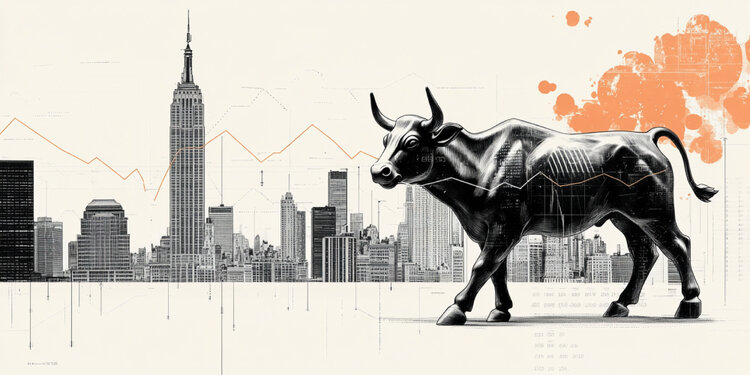The ability to wake up in a different place every day, live and work in some of the most beautiful places in the world and feel absolute freedom… It’s no wonder so many people dream of life on the road.
Kate Oliver not only managed to make life in a van a reality – but also turned it into a business. Along with his wife, Ellen PrasseKate launched The Modern Caravan, a business that took them across America as they repaired old Airstream vans – a project that began after the beautiful renovation of her first Airstream, Louise.
Now Kate has published a book, “The Modern Caravan” – a kind of meditation on life in vans, telling the story of people who have restored their own vans, showing their lifestyle and giving renovation tips. But it’s also a guide to their aesthetics of how to achieve that DIY (“do it yourself”) style because, according to them, everyone loves to hit the road – even if they don’t quite know why.
dreaming of another life
Growing up in the American Midwest, Kate felt out of place. “I never felt like I fit in and I didn’t have an easy childhood,” she says. To occupy herself, she called the local library her “escape”.
“Initially it was all fiction, then one day I wandered around and found architecture and interior design books, and I thought, ‘Oh my God, these are real places, they exist somewhere,’” he says.
“There was something in those pages and photographs that I could imagine. Obviously the photos were staged, and my nine-year-old mind didn’t know that, but there was often food on the counter being prepared, and I imagined the whole scenario unfolding. I thought, I want that kind of life, full of dates.”
Kate achieved this different lifestyle – albeit in a far more different way than she imagined.
“What if we sell everything?”
In 2013, Kate and Ellen started talking about the future. They wanted something more for themselves and their four-year-old daughter, but weren’t sure what.
“For six months, we sat every night drinking tea, talking about what it meant,” she says.
“We never came to a conclusion, but one morning in January 2014, I came across some pictures of a band on tour. Someone in the band apparently had a child and was taking their child on tour.”
It was a moment of revelation.
“That was it – I thought, I know we don’t have a van, but this is what we need to do. I texted my wife at work and said, what if we sold everything, bought a van and traveled – and she said yes.”
The next morning, when Ellen went to work, Kate got to work, planning her lifestyle change. In 2014, she said, “it wasn’t very common – life in the van wasn’t a thing.” She also admits, “We didn’t know what was coming.”
The grinding to build a house
Because from photos on Instagram, turning an Airstream into a stylish home looks very glamorous. In fact, says Kate, it was hard work, not always pleasant and very heavy.
“We were hoping to find a really cool vintage Airstream and maybe paint it a little bit,” she says. After several months, they found one that seemed to fit the bill – but then took it home.
“Once we started doing the basic excavations, we said, ‘Oh my God, this is a much bigger project.
The rats had chewed up the electrical part, which meant the whole thing had to be redone. The interiors also needed massive work.
“Within a few months we had everything down to the chassis and the housing,” says Kate. “You could be down to earth, but still in your trailer.”
Sweat, tears and curses
Kate didn’t have any experience with renovation or construction, but Ellen did – her mother is an electrical engineer and she learned from her family. A love of sculpture also meant she was good with her hands and had an eye for what worked.
In her book, Kate talks about the hard manual work that changed them physically. She liked it and it was a surprise: “When I got into a stream, I really enjoyed the physical work, and I was amazed at how well our strengths and weaknesses played with each other. Where I lacked strength, she did and vice versa.”
Today, people looking at her designs or flipping through Kate’s book won’t see the “sweat, tears and swearing” she says goes into rebuilding a van — mostly because of all the phases of work.
“Typically, a contractor building a house has someone else do the electrical work, plumbing, drywall, custom cabinetry or custom furniture,” she says. “We do it all.”
The one thing they don’t do anymore? Upholstery. “We enjoy using power tools, but when it comes to the sewing machine, we need professionals,” says Kate.
the tricky start
It took a year to renovate the van they would name Louise. During that time, they sold their house and moved into the van, creating their home while living in it. Eighteen months later, they were on the road. They traveled across the United States in Louise, sleeping in the desert and by the sea, living the dream of living in a van.
It was while they were on the road that they realized they could make this a renovation business. The idea was simple: travel in her Airstream to clients’ homes, where they would work there, doing Louise-style makeovers of old jalopies.
Today, with the proliferation of the “van life” movement and companies offering transformation services everywhere, it would be difficult to make a name for yourself. But in 2017 it was easier.
“We were at the sweet spot where the travel lifestyle was taking off, a lot of others weren’t doing what we were doing, and Instagram was still growing organically,” says Kate.
They traveled across the United States – by this time on their second Airstream – going to clients’ homes and renovating their vans there. Interestingly, most of her clients were women – together, but “with their husbands in agreement,” says Kate.
seeking security
It wasn’t all a dream they went through, though. In the book, Kate talks about experiencing misogyny and homophobia at work. “Sometimes we want to think we’re more progressive and accepting than we really are,” she says.
In fact, it was a terrible experience that made them give up on their business model of visiting customers on the spot.
“When we started, we wanted to include our love of travel in the business and said we wouldn’t accept contracts longer than two years because we wanted to assess whether or not it was working,” he says.
“We knew before we went to the last job that it wasn’t very sustainable – we were working insane hours, homeschooling our daughter, constantly working. We weren’t exploring. This is not how we wanted to do things.”
Around the same time, in early 2019, a friend informed them about a new trailer for sale – and the two immediately said they wanted to buy it and then sell it.
“We would start to change the Airstreams: buy, renovate and then sell them – it seemed more doable and safer”, he says. They named their new vehicle Hope.
Van life in a pandemic
Just as they were embarking on this new chapter, Kate was asked to write about Van’s life. So they went back behind the newly restored steering wheel and spent the next year in the United States, photographing people living in renovated Airstreams.
They were already talking about potentially settling down, with their daughter ready to start high school, when the pandemic hit.
“Covid was really tough,” she says. “We were back on the road when the world stopped. The camps were closing, everyone was saying go home, but for the nomads, which house do you go to?”
The family then parked in the backyard of Ellen’s parents’ Kansas home and stayed there for a few months. After a while, they realized that a studio was needed to carry out their renovation work.
“Staying in my in-laws’ backyard wasn’t an option, so we said, OK, time to settle down,” says Kate. On June 4, 2020 – she remembers the date instantly – they moved into a house.
Nearly two years later, they are working on their 12th vehicle.
Matching personality with van
For Kate, the road is, clearly, life – and she wants to bring that life to other people’s projects. So how do you encapsulate someone’s essence in a caravan?
“I can’t project for someone if I don’t know who they are,” he says. “I like to have very intimate conversations – some are up for it, some aren’t. We start with how they live now. This is crucial – for clients who want to use it as a home, it’s important to have a sense of the road and work and how they will feel when they need to move.”
“I want to know what they do at work, what their lifestyle is. Do they prefer to sit on a couch, at a table, do they need a separate workspace?”
After talking about needs and style, the pair move on to design.
Kate is a firm believer in the power of hitting the road.
“When I first went there, and it was so far from the Midwest, where I was raised, I was able to breathe and see myself for the first time,” she says.
“I could see who I was because I had the space and time to think about it. I think a lot of people think of it as escapism. I went to escape the life I didn’t want and found the life I made and wanted. There is so much distracting us, and we lose sight of it very easily.”
“I think people go to find out who they are away from all that. I think we need to be silent.”
Source: CNN Brasil







